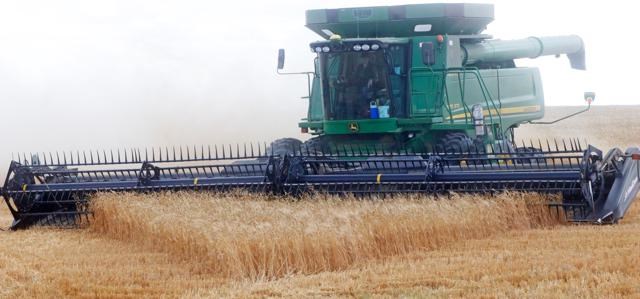Rain showers in the last couple of weeks have been welcomed by farmers in the southeast region, but more rain will be needed as the forecast is calling for an extended length of hot days to come.
In the RM of Weyburn area, about 0.8 mm of rain fell on Saturday, and 7.8 mm on Thursday, with the last rain before that on June 19, when about 4.5 mm fell in the area. Other areas received little prior to Thursday, ranging from 3 mm in the Radville area to a trace in the RM of Francis area and 0.5 mm in the RM of Wellington.
For farmer Dale Paslawski, whose land is in the Cedoux area north of Weyburn, he estimates he’s received a total of 8.2 inches so far this growing season, and is in need of more good soaking rains.
Some fields saw flooding when his land received heavy rainfall in a short time that ran off without soaking much into the ground.
“Moisture is always a concern, and we’re going to need a couple more inches of rain here to help head out, bolt and fill,” he said.
His crops are mostly growing well, outside of the flooded areas, and he noted his canola crops are starting to bolt, and the durum is starting to head out.
“I had some flea beetle damage. I sprayed for them, and Canada thistle seems to be a problem weed for me,” added Paslawski, noting he is watching for diamondback moths in his crops.
“I’ve noticed some moths in the area, but I’m not sure what species they are,” he said.
In the crop report from Sask. Agriculture, issued prior to the rain on Thursday, cropland topsoil moisture is rated as 78 per cent adequate, 19 per cent short and three per cent very short.
Hay and pasture land topsoil moisture is rated as 55 per cent adequate, 40 per cent short and five per cent very short.
There has been delayed growth in pastures and on hay land, and producers have indicated they have a reduced hay yield. Their first cut of hay may be delayed due to slow growth.
Regionally, 54 per cent of the fall cereals, 82 per cent of the spring cereals, 80 per cent of the oilseed crops and 82 per cent of the pulse crops are at their normal stages of development for this time of year.
Some crops are behind in development, including 38 per cent of the fall cereals, 14 per cent of the spring cereals, 17 per cent of oilseed crops and 10 per cent of the pulse crops.
The wind quit blowing for most of the week, which allowed farmers to make progress with spraying for weeds and insect pests, such as flea beetles and cutworms.
Across the region gophers have become a noticeable problem in both pasture and crop land, with moderately sized areas impacted, and farmers will be trying to keep the gopher population to a manageable size.




